 |
It all starts with the universally applicable premise that people want to be understood and accepted.
|
16 |
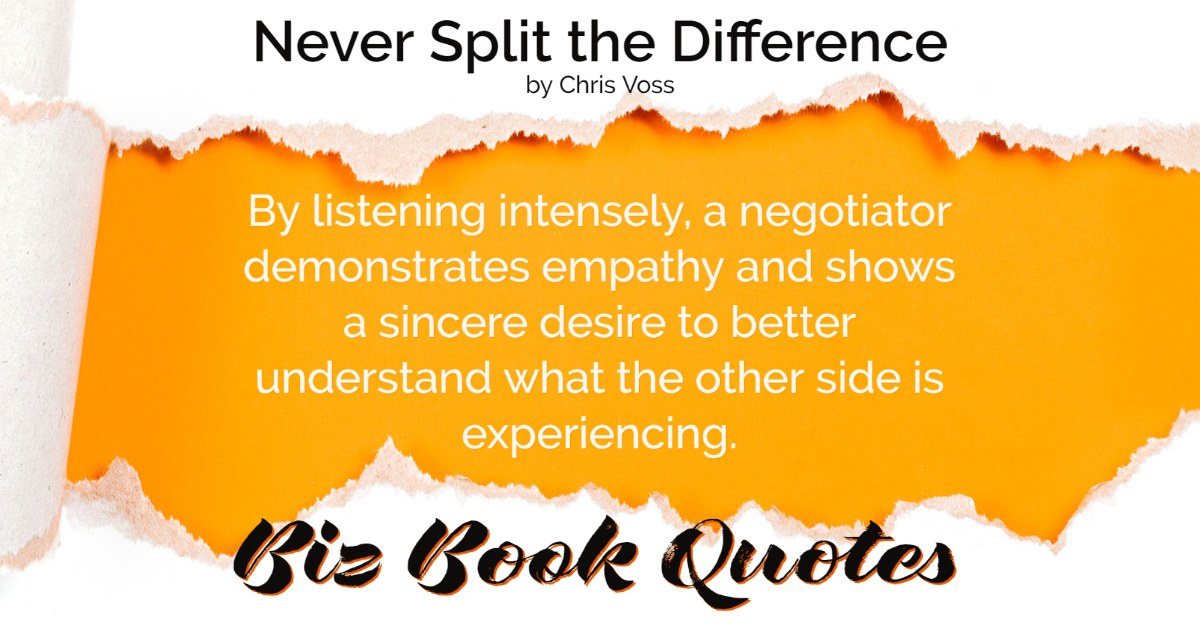 |
By listening intensely, a negotiator demonstrates empathy and shows a sincere desire to better understand what the other side is experiencing.
|
16 |
 |
Tactical empathy is understanding the feelings and mindset of another in the moment and also hearing what is behind those feelings so you can increase your influence…
|
52 |
 |
…when you phrase a label as a neutral statement of understanding, it encourages your counterpart to be responsive.
|
56 |
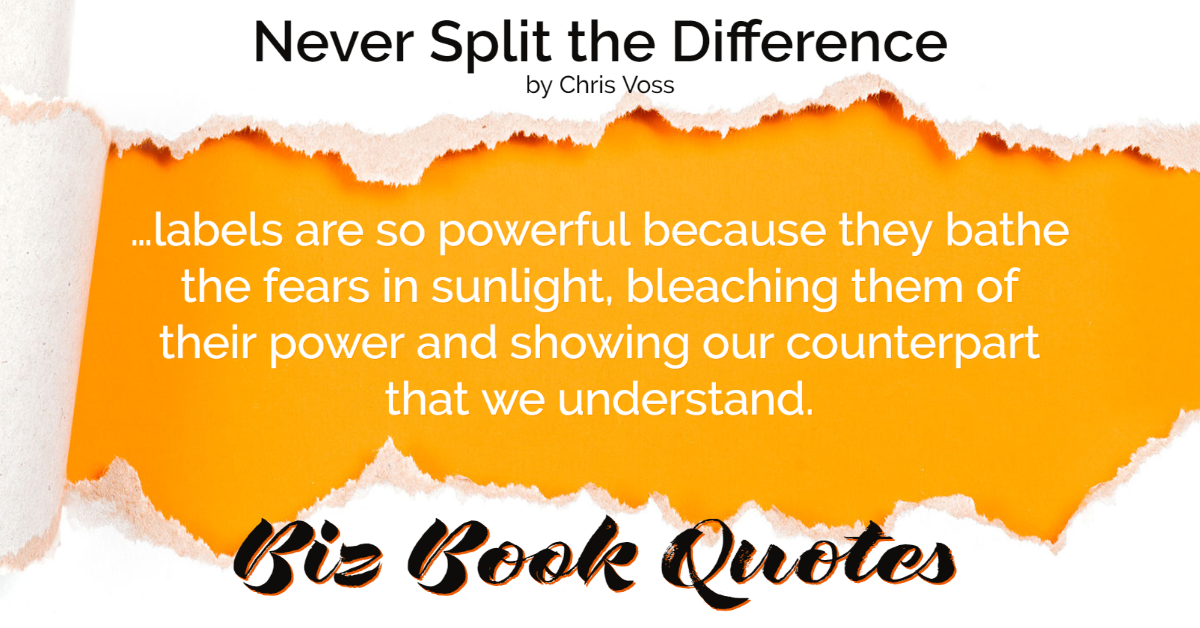 |
…labels are so powerful because they bathe the fears in sunlight, bleaching them of their power and showing our counterpart that we understand.
|
61 |
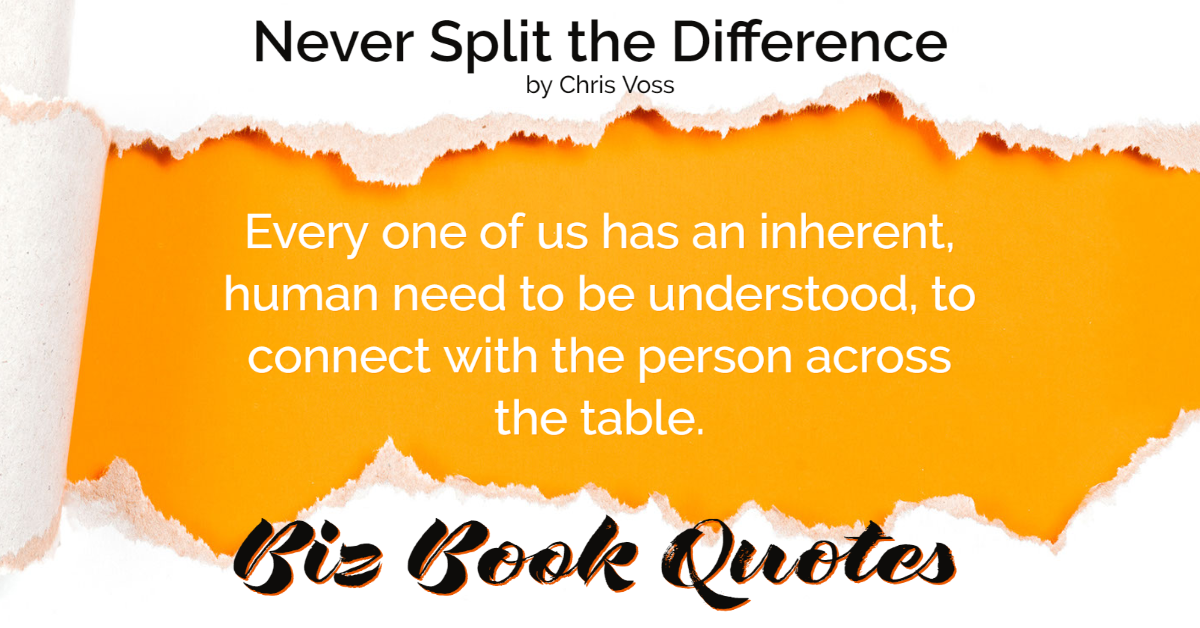 |
Every one of us has an inherent, human need to be understood, to connect with the person across the table.
|
68 |
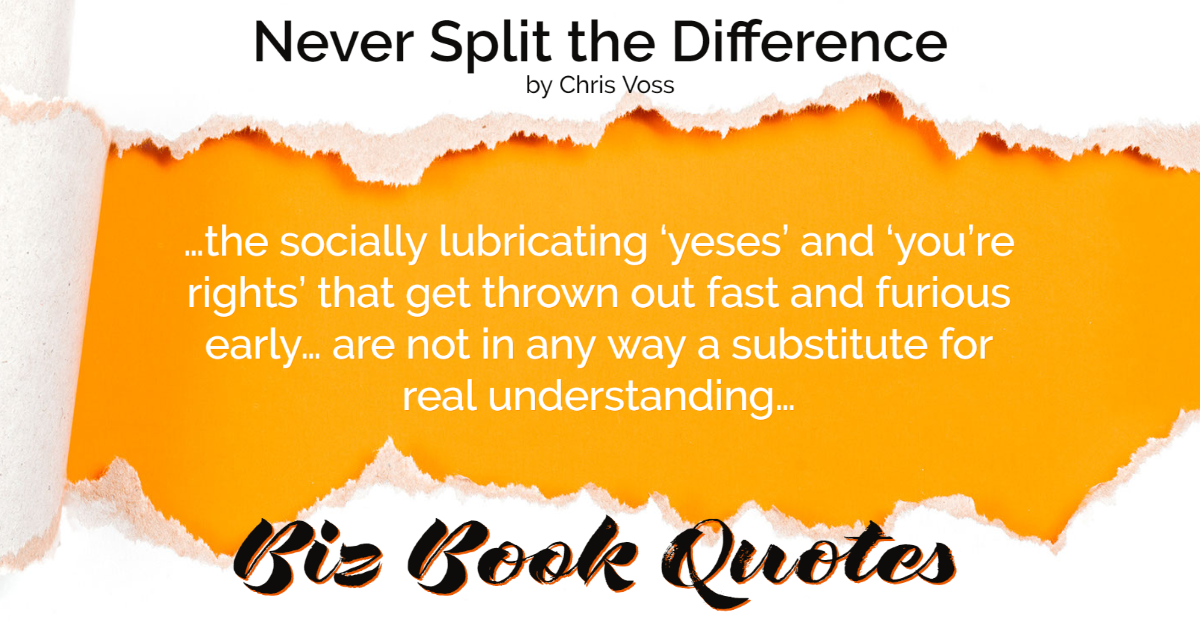 |
…the socially lubricating ‘yeses’ and ‘you’re rights’ that get thrown out fast and furious early… are not in any way a substitute for real understanding…
|
112 |
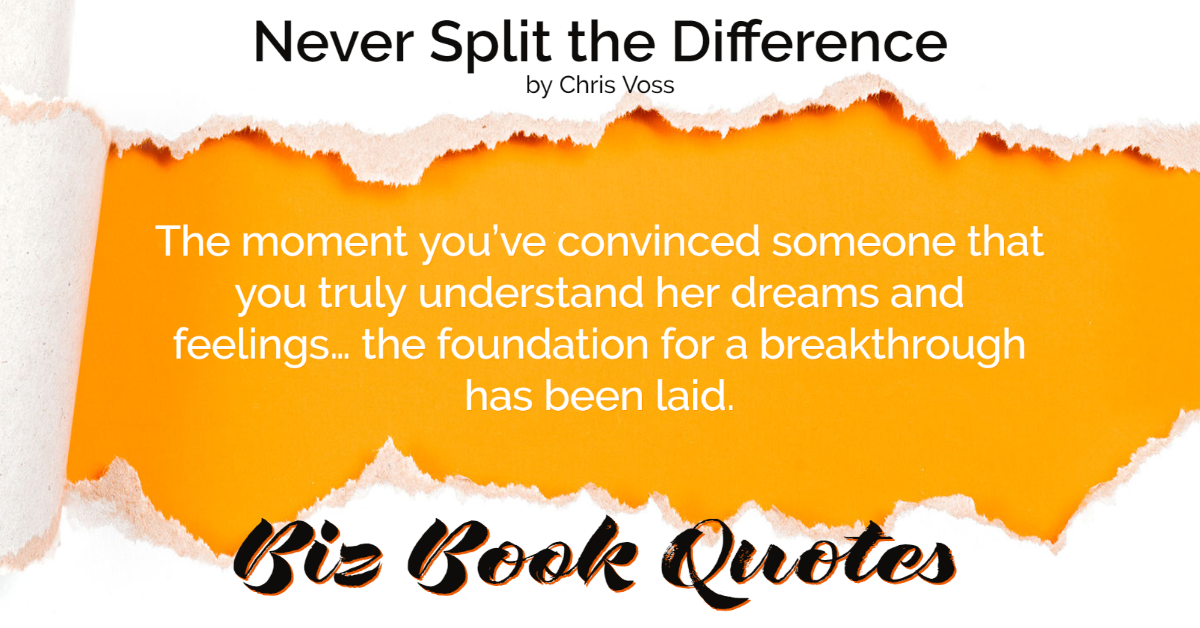 |
The moment you’ve convinced someone that you truly understand her dreams and feelings… the foundation for a breakthrough has been laid.
|
112 |
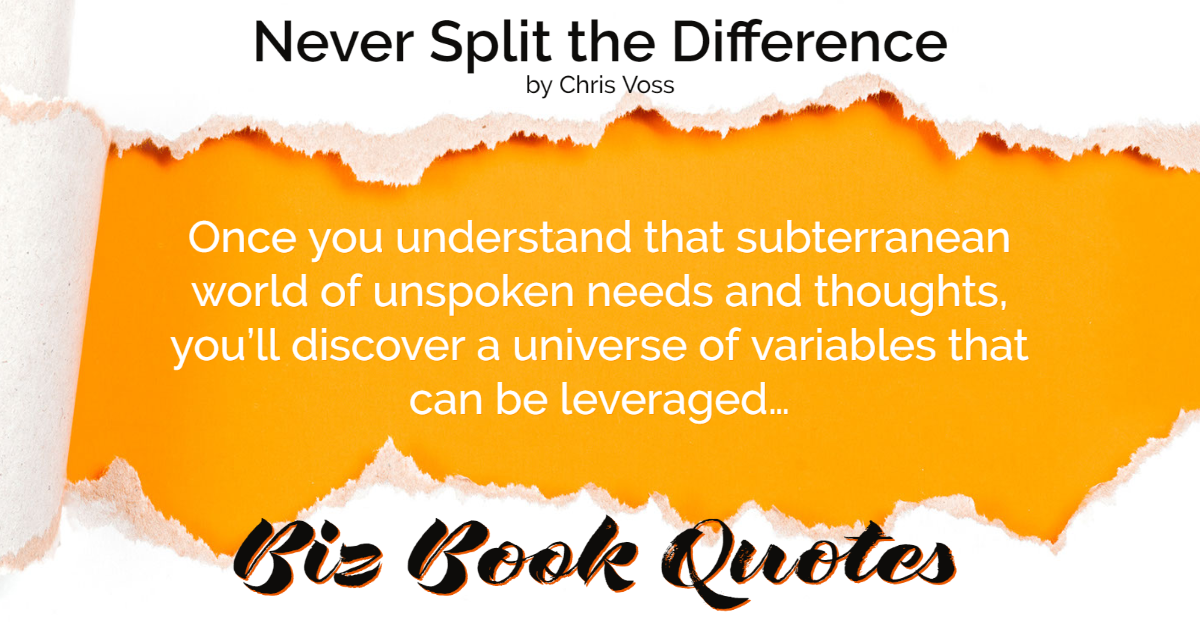 |
Once you understand that subterranean world of unspoken needs and thoughts, you’ll discover a universe of variables that can be leveraged…
|
114 |
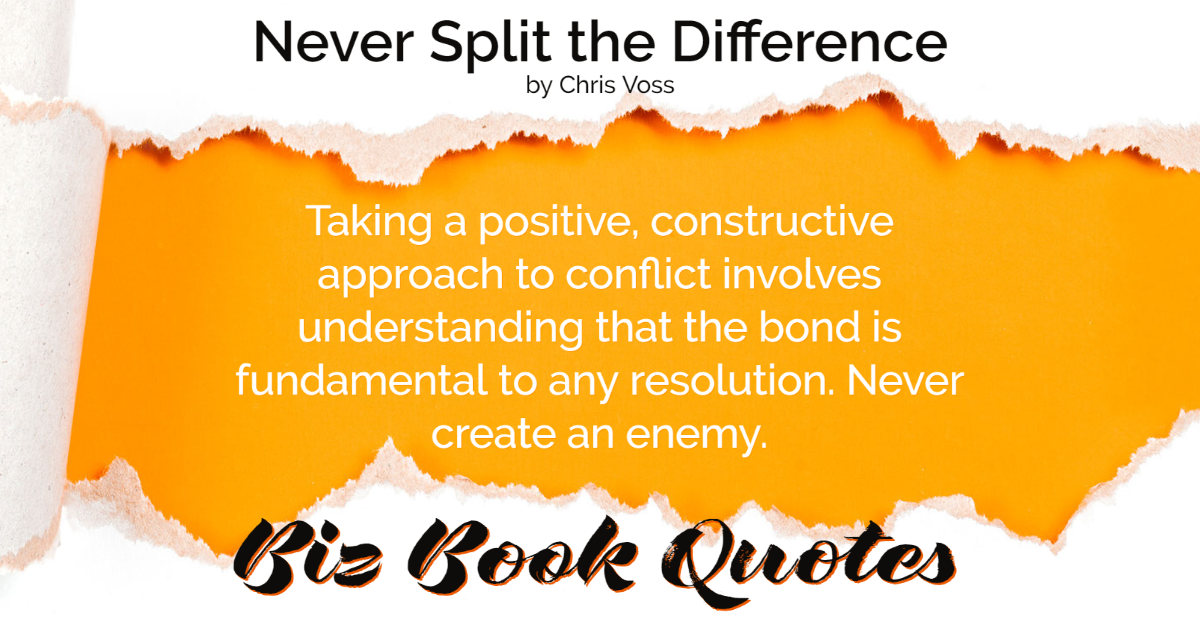 |
Taking a positive, constructive approach to conflict involves understanding that the bond is fundamental to any resolution. Never create an enemy.
|
205 |